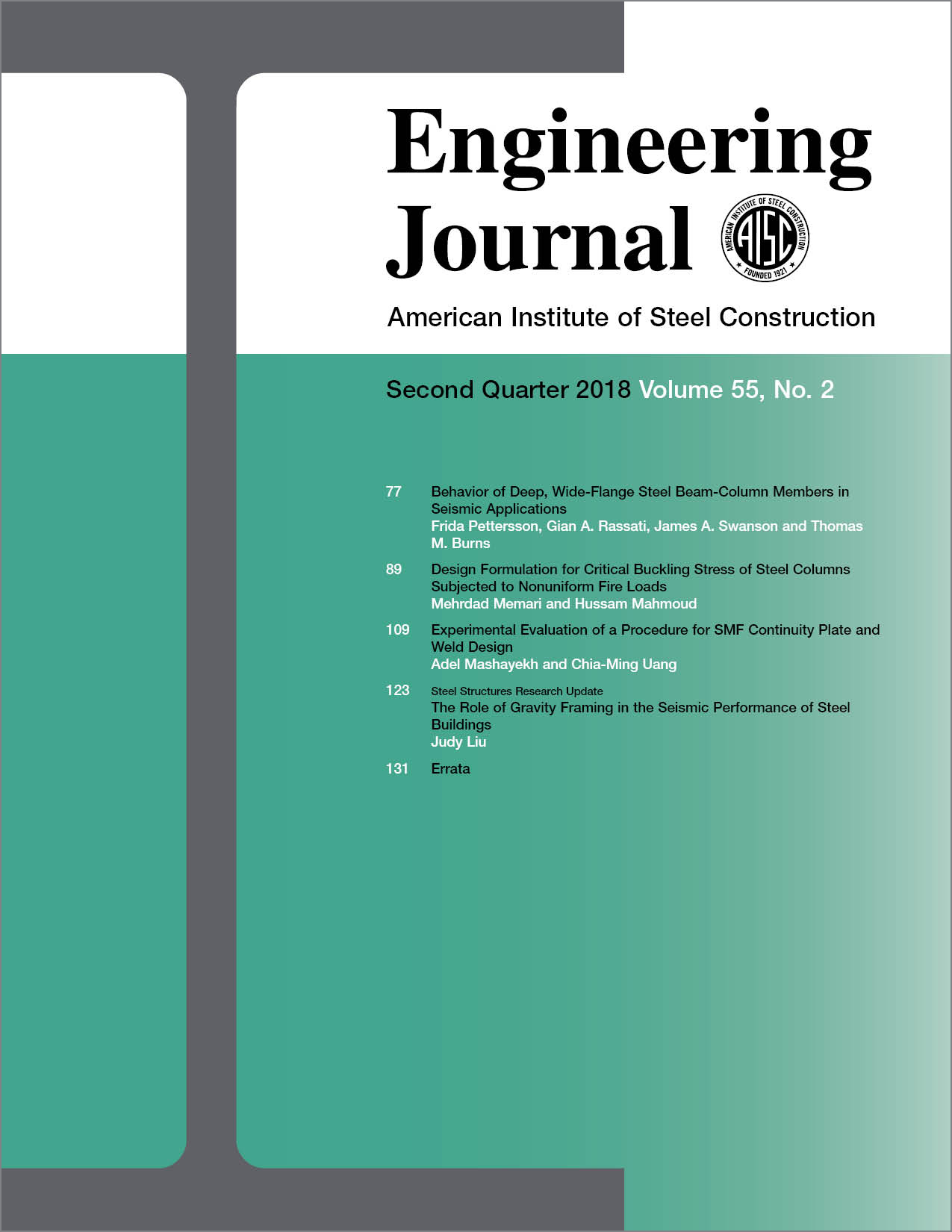Behavior of Deep, Wide-Flange Steel Beam-Column Members in Seismic Applications
DOI:
https://doi.org/10.62913/engj.v55i2.1129Keywords:
deep columns, beam-columns, SMF, RBS, panel zone strengthAbstract
This study involves a parametric analytical investigation of the behavior of deep columns with one-sided reduced beam section (RBS) connections for application in special moment frames (SMFs). Earlier studies led to the prequalification of RBS moment connections for column sizes up to W14 sections; however, the use of deeper columns in SMFs would be advantageous because of their ability to economically control drift. Information on deep column behavior using an RBS moment connection is limited, and this study investigates this behavior using a total of 40 assemblies designed according to the 2016 AISC Seismic Provisions. Four column sections were investigated—W14×426, W24×192, W27×194, and W30×191—each subjected to five levels of axial load, two levels of panel zone strength, and modeled conservatively without floor slab restraint. The study concluded (1) that increased column depth does not have a negative impact on the behavior of the connection as long as the axial loads in the columns are below 80% of the design capacity and (2) that deep columns can be considered as a valid alternative to W12 and W14 sections that are commonly used for RBS connections in SMFs, as long as they are properly detailed.

